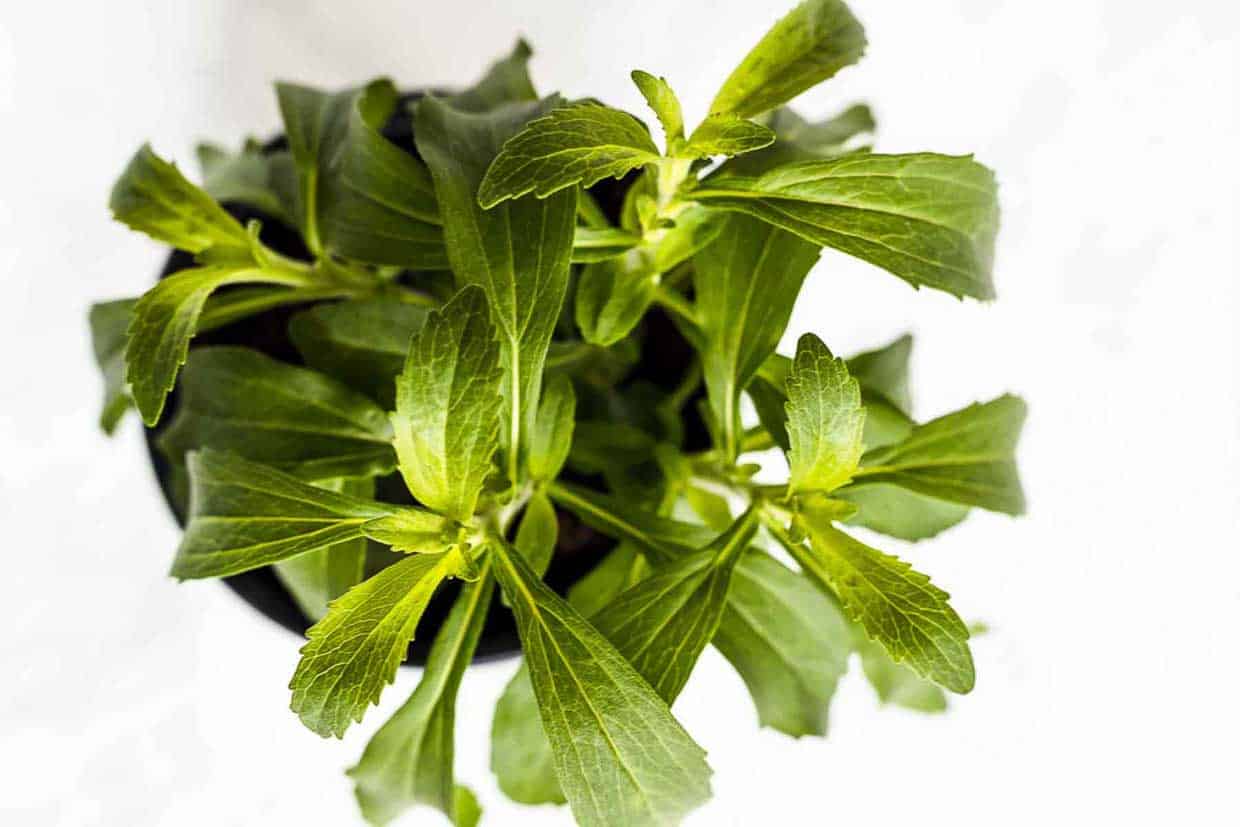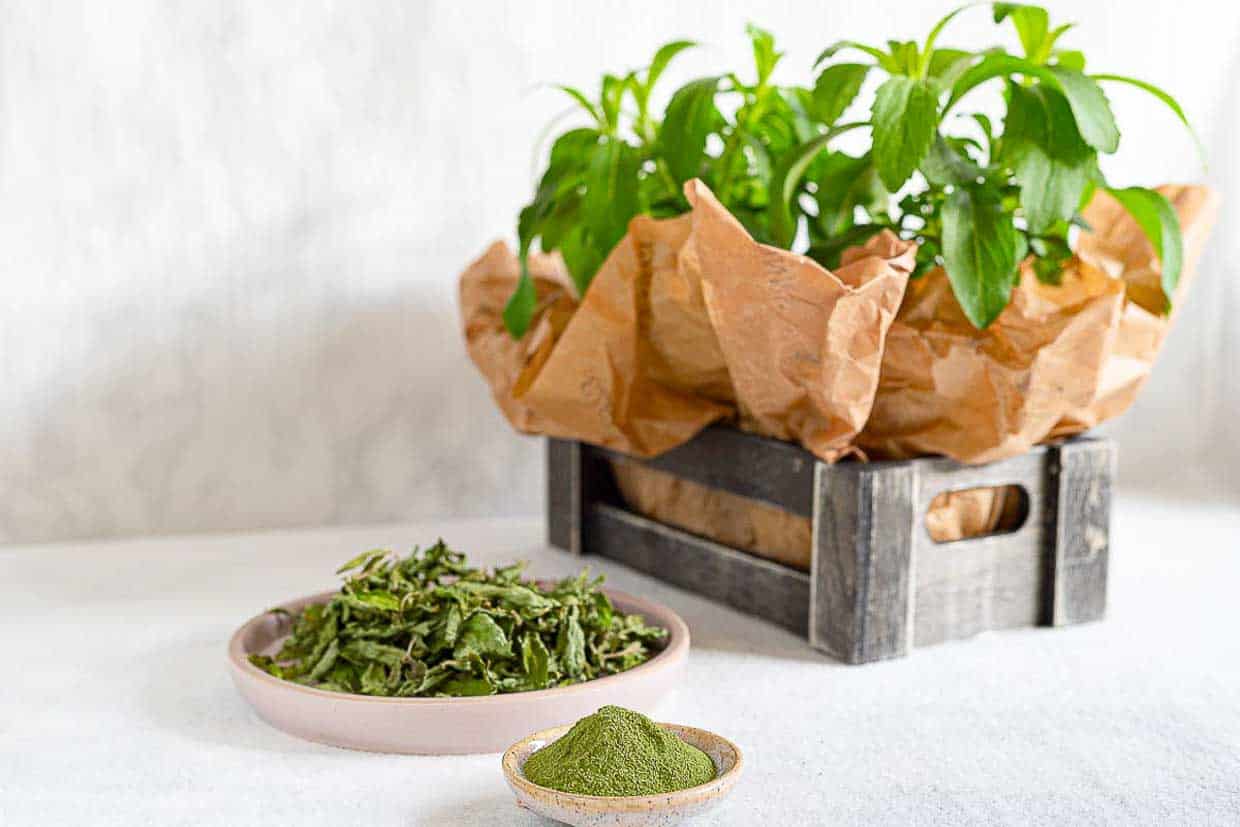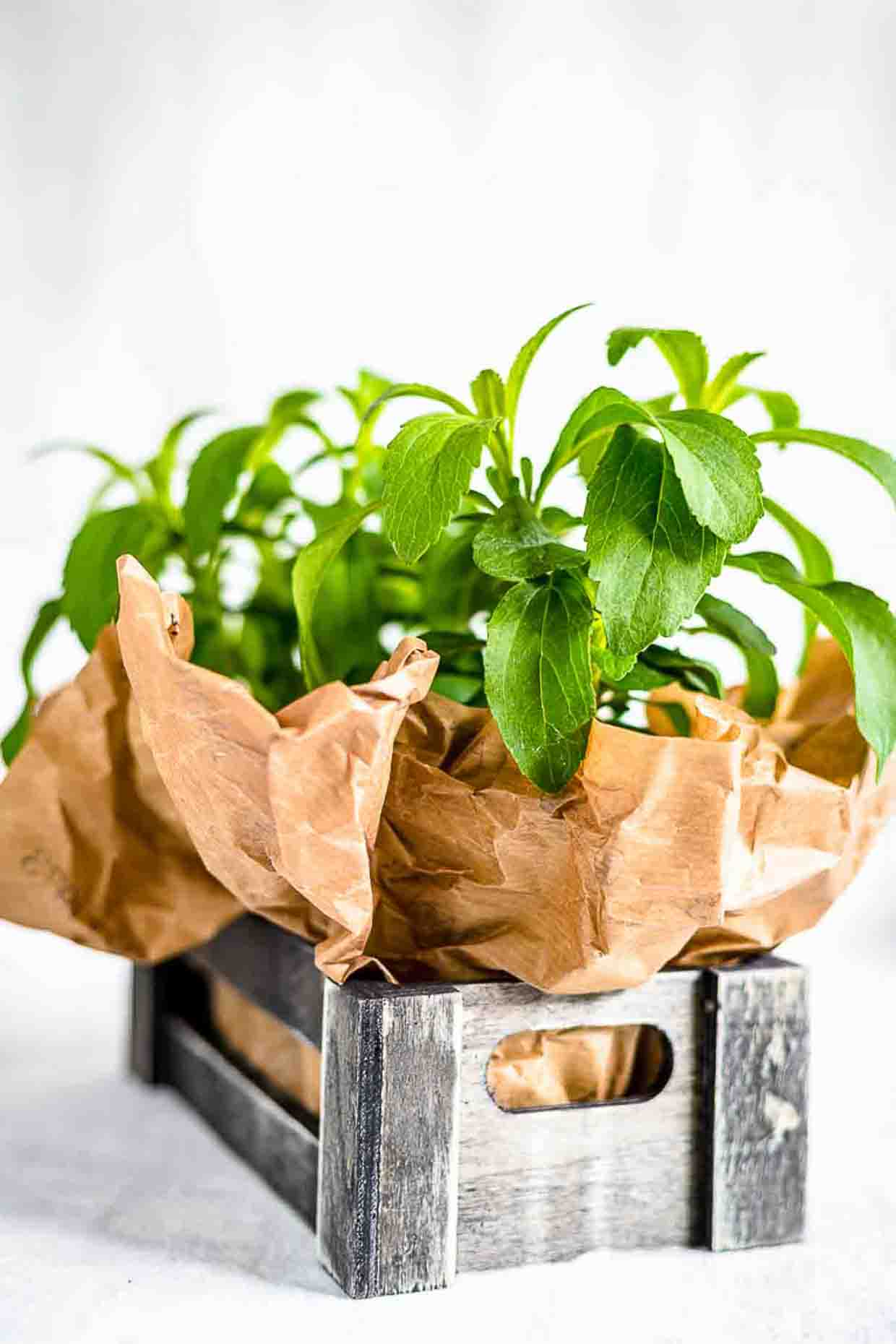If you’re looking for ways to reduce your sugar intake, you’ll be happy to discover the Stevia Plant. Find out why you should pick this sweetener above others, how much to use in baking or sweetening drinks, and how to grow stevia yourself.

Are you tired of using artificial sweeteners that leave a strange aftertaste or have potential health risks? It is time to switch to stevia, a centuries-old, natural, plant-based alternative sweetener from South America. Here are 10 interesting facts about stevia that make you want to use it daily.
Everything You Need To Know About the Plant Stevia
Learn the basics and main reasons why you should use stevia in your daily life. Try to plant it in your garden, make your sweetener, or buy already-made stevia. Whatever you will choose, those facts will help you get convinced.
What Is Stevia?
Stevia is a sweet herb and natural sweetener that is increasingly popular thanks to its health benefits and lack of calories. For centuries, it was only found in places like Paraguay and Brazil, but recently it has gained traction in the Western world. Traditionally stevia was used to sweeten tea, but these days people are using it for so much more.
Stevia comes from the leaves of a plant called Stevia rebaudiana, which is native to South America. It is a low-calorie sweetener and does not affect blood sugar levels, making it an attractive alternative to sugar for people with diabetes or those looking to limit calories.
The sweetness of stevia comes from compounds known as steviol glycosides or stevioside, which are up to 300 times sweeter than sugar. A tiny bit of stevia powder provides the same sweetness as sugar.
Growing Stevia Plant
Have you ever tried growing stevia? Look no further.
I started growing my stevia about ten years ago and have new seeds ready for the year ahead.
Stevia is a perennial plant that grows quickly in warm, humid climates. You can grow it in pots or in the ground as long as it has well-draining soil and full sun. You can start your stevia plants from seeds or from cuttings.
Growing stevia in your garden is super easy. Buy a small plant in spring, plant it and wait for the magic to happen. Stevia grows fast and needs just a bit of sun, warm weather, and water. Once autumn comes, cut your plant and dry fresh leaves to use throughout the whole year.
And did you know you can even make money growing plants at home?

Discover the Wonders of Stevia
Here are 10 interesting facts about stevia that make you want to use it daily.
Stevia Is 300 Times Sweeter Than Table Sugar
Dried stevia leaves are up to 300 times sweeter than sugar, so you only need a small amount to sweeten your food or drinks.
Fresh stevia leaves are delicious and perfect for adding to your tea, but only slightly sweet. You need to dry your stevia leaves to get the extra sweet taste. Through the process of drying, the sweetness intensifies immensely.
There Are Various Types of Stevia
Several different types of stevia are available on the market, including stevia leaves, stevia extract, and stevia blends.
- Stevia leaves can be used fresh or dried and added to food and drinks as a natural sweetener.
- Stevia extract is a highly concentrated form of stevia used as a sugar substitute in baking and cooking.
- Stevia blends combine stevia extract with other sweeteners, such as erythritol or monk fruit, to create a product similar in taste and texture to sugar and remove some of the bitter taste.
Stevia Has a Unique Flavor
Stevia has a flavor profile that is slightly sweet and slightly bitter. The taste of stevia can vary depending on the type and brand. Some products are sweeter or more bitter than others. Some people find the stevia taste unpleasant, while others enjoy it.
Stevia Is a Natural Plant
Stevia is a perennial plant that belongs to the sunflower family. It grew natively in South America and was used by indigenous people for centuries as a natural sweetener. Today, stevia is grown in many countries worldwide, including the United States, Europe, China, and Japan.
Stevia Is Low Calorie and Low Glycemic
Stevia is a perfect option if you’re looking to cut back on calories or control your blood sugar levels. It contains no calories and has a low glycemic index, making it suitable for type 2 diabetics or those following a low-carb diet.
Stevia does Not Raise Blood Sugar
The stevia plant contains very minimal amounts of carbohydrates. Once dried, a tablespoon contains only one gram of carbohydrates. Bearing in mind that it is 300 times sweeter, you only need a pinch to sweeten your food, and therefore, almost no carbs are involved, and your blood glucose levels stay intact.
Stevia Has a Long Shelf Life
Unlike sugar, which can go bad if not stored correctly, stevia has a long shelf life. You can keep it in a cool, dry place, and it will remain stable for years. It makes it a convenient choice for people who don’t want to worry about their sweetener going bad.

Stevia Has a Clean Taste
Unlike artificial sweeteners that can leave a strange aftertaste, stevia has a clean, natural taste. It is often used in beverages and foods to sweeten them without altering their flavor.
Stevia Is in a Wide Range of Products
Stevia is in many products, including beverages, baked goods, candy, and even personal care items like toothpaste and mouthwash. Use it in baking in place of sugar whenever possible. If you’re looking to reduce your sugar intake, check the label of your favorite products and see if they contain stevia as a sweetener.
Stevia Is Environmentally Friendly
Stevia is a sustainable and environmentally friendly alternative to sugar. It requires minimal water and pesticides to grow and harvest by hand. In contrast, sugar production requires a large amount of water, pesticides, and fertilizers, and it can negatively impact local ecosystems.
How To Harvest Stevia Plants?
- Cut your stevia plant back to about 6 inches in height when the leaves are at their fullest and most flavorful, usually in the early autumn.
- Remove any dead or damaged leaves from the plant.
- If you see any small white flowers on top, you can save those for stevia seeds for future planting.
- Gently strip the leaves from the plant’s stems, starting from the bottom and working your way up.
- Dry the leaves by laying them out on a sheet of newspaper or parchment paper in a warm, dry place for about a week until they are dry and brittle to the touch.
How To Store Stevia?
The best way to store stevia is by drying it first. Once you cut your plant, wash and fully clean all the leaves. Lay them on a paper towel and let them dry completely.
You can store whole dry stevia leaves in a mason jar, budget friendly storage ideas or grind them into a dried stevia powder, like matcha tea using the Magic Bullet, coffee grinder or spice grinder.

How To Make Stevia Extract?
To make an extract, all you need is fresh stevia leaves and clean alcohol.
Once you pick your fresh plants from the garden, clean and cut all the leaves, place them into the mason jar, and fully cover them with alcohol. The ratio should be about one cup of stevia leaves to one pint of alcohol. The best alcohol choice is vodka for its neutral flavor.
Fully close the lid and store it in a cool, dry place. Make sure you shake it gently every day for the first seven days to ensure all of the leaves are in alcohol.
After approximately eight weeks, you can strain pure stevia extract and store it throughout the year.
How To Use Stevia Sweetener?
Once you have prepared your green stevia powder and extract, you can use those instead of sugar in baking or sweetening your drinks. Remember that dry stevia is extremely sweet, and you need only a pinch for your goodies. Add a bit to crepes, or infused tea for that fresh sweet flavor.
Whether you want to reduce sugar intake or find a sustainable alternative to traditional sweeteners, stevia is worth trying out.
Zuzana is the creative force behind her websites Lowcarb-nocarb and Best Clean Eating. As a content creator, food recipe developer, blogger, and photographer, Zuzana brings diverse skills to the table with a dedication to sharing delicious, healthy recipes and helpful tips with the readers. Get her Best Keto Recipes Book for free.